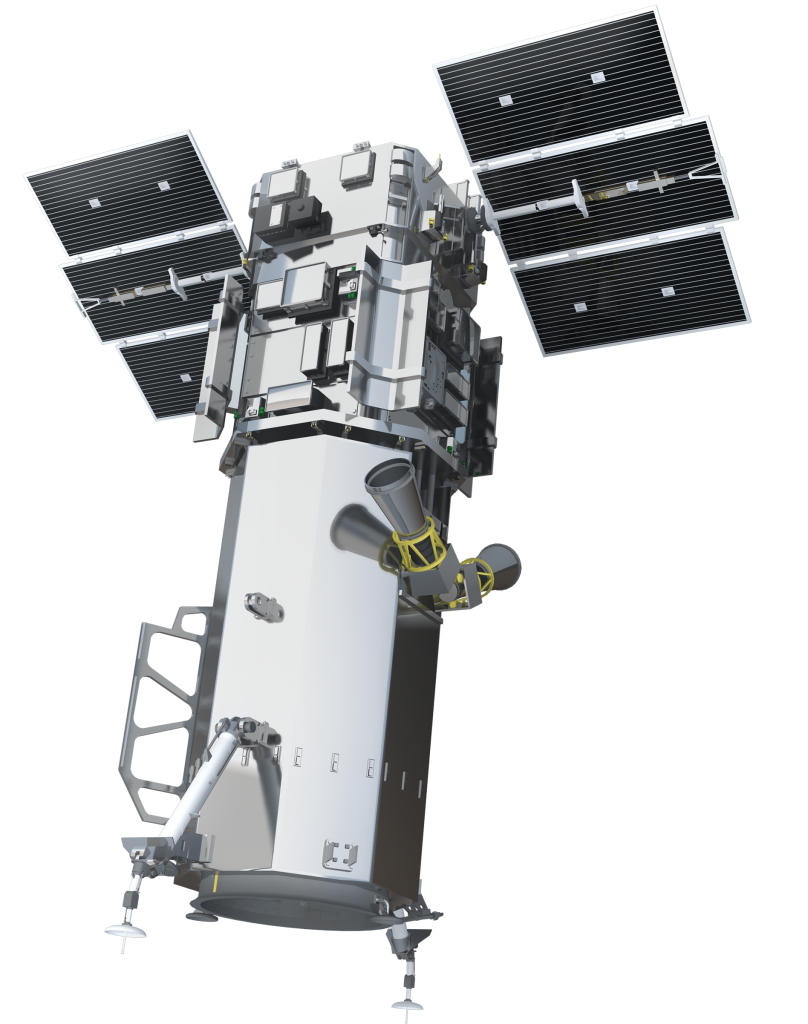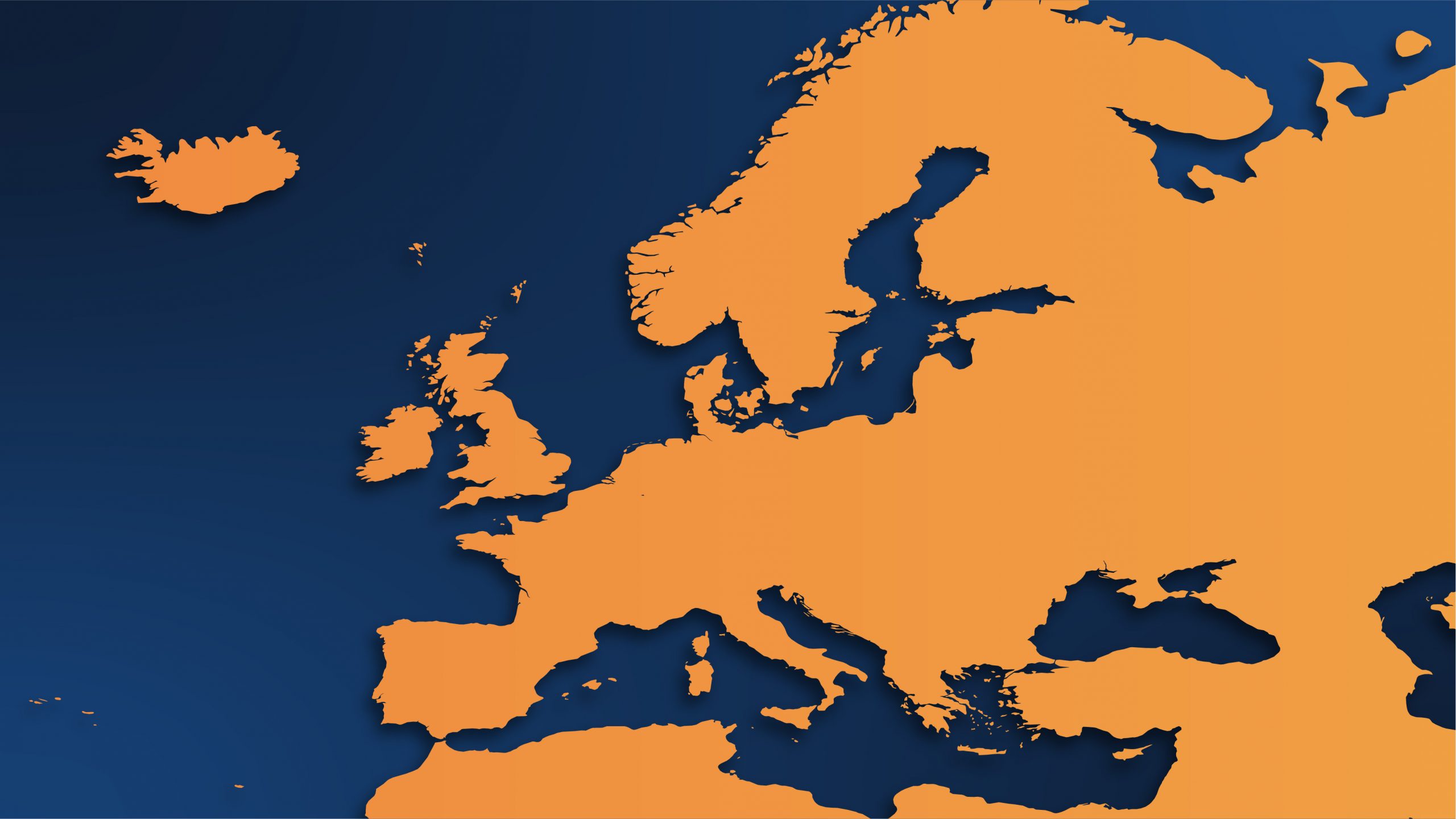18 Famous European Landmarks in satellite images
Satellite sensors captured unique architecture, breathtaking nature and centuries of history. Scroll down to explore 18 famous European landmarks from over 600 km above the Earth.
Colosseum (Rome, Italy)
Collected on 23 September 2023 by WorldView-3 satellite at 31 cm GSD. Off-nadir angle: 22.2°.
The Colosseum is the largest ancient amphitheatre ever built. Constructed in 80 AD on an area of 2 hectares, it could hold 50,000–80,000 spectators at different points in history. Reportedly, it was possible to flood the building and use it for sea battle simulations. The Colosseum is now enlisted as one of the New 7 Wonders of the World.
© Maxar Technologies Provided by European Space Imaging
Belem Tower (Lisbon, Portugal)
Collected on 23 September 2023 by WorldView-3 satellite at 36 cm GSD. Off-nadir angle: 22.2°.
Lisbon’s Belem Tower was constructed in the early 16th century to honour the legendary Portuguese explorer Vasco da Gama, who played a crucial role in establishing maritime trade routes to India. Belem Tower served as a point of embarkation and disembarkation for Portuguese explorers and as a ceremonial gateway to Lisbon.
© Maxar Technologies Provided by European Space Imaging
Acropolis (Athens, Greece)
Collected on 22 October 2023 by WorldView-3 satellite at 33 cm GSD. Off-nadir angle: 12.3°.
The Acropolis is a fortified citadel which is home to the iconic Parthenon, Erechtheion, and other buildings primarily dedicated to the goddess of wisdom and warfare – Athena. Legend has it that the Erechtheion temple houses a sacred olive tree gifted by the goddess herself. Currently, the Acropolis welcomes three million tourists per year.
© Maxar Technologies Collected by European Space Imaging
Brandenburg Gate (Berlin, Germany)
Collected on 18 August 2023 by WorldView-3 satellite at 31 cm GSD. Off-nadir angle: 1.1°.
Inspired by the architecture of the Acropolis in Athens, the Brandenburg Gate was constructed in the late 18th century as the first Greek Revival building in Berlin. Its beauty was so stunning that when Napoleon took Berlin, he seized the statue from the top of the gate and moved it to Paris. It was returned after his defeat. The division of Germany in the 1940s caused the Brandenburg Gate to be inaccessible for visitors, and after the fall of the Berlin Wall, crowds gathered to witness its opening. The Gate became a symbol of reunification.
© Maxar Technologies Collected by EUSI
Buckingham Palace (London, UK)
Collected on 11 November 2023 by WorldView-3 satellite at 35 cm GSD. Off-nadir angle: 19.7°.
Buckingham Palace, the official London residence of the King, consists of 775 rooms. These include 52 Royal and guest bedrooms, 188 staff bedrooms, 19 State rooms, 92 offices and 78 bathrooms. (For comparison, that’s only one third of the rooms in Versailles.) Within the Palace, the Queen’s Gallery showcases changing exhibitions of items from the Royal Collection, including paintings, furniture, and decorative arts.
© Maxar Technologies Collected by EUSI
Fisherman’s Bastion (Budapest, Hungary)
Collected on 4 September 2023 by WorldView-3 satellite at 31 cm GSD. Off-nadir angle: 3.3°.
Fisherman’s Bastion is a panoramic viewing terrace in Budapest. Even though it looks like from a fairy tale, it is a relatively new building: It was constructed in 1895–1902 to celebrate the 1000th birthday of the Hungarian state. Its seven high-pitched stone towers symbolize the seven chieftains who founded Hungary in 895.
© Maxar Technologies Collected by EUSI
Louvre (Paris, France)
Collected on 27 March 2022 by WorldView-2 satellite at 48 cm GSD. Off-nadir angle: 9.5°.
Possibly the most famous museum in the world, the Louvre exhibits over 500,000 works of art, including pieces like the Mona Lisa, the Venus de Milo, or the French crown jewels. The glass pyramid serves as the main entrance to the Louvre, providing access to more than 7 million visitors every year.
© Maxar Technologies Collected by EUSI
Leaning Tower of Pisa (Pisa, Italy)
Collected on 7 November 2023 by WorldView-3 satellite at 35 cm GSD. Off-nadir angle: 19.8°.
The unintentional tilt of the Leaning Tower of Pisa started during its construction as a consequence of the foundation on one side being too soft. Three of its eight stories had been completed before the tilt became noticeable. The engineer responsible for the construction wanted to compensate for the lean by making the new stories slightly taller on the short side, which led to an even bigger tilt.
© Maxar Technologies Collected by EUSI
Seville Cathedral (Seville, Spain)
Collected on 1 July 2023 by WorldView-3 satellite at 34 cm GSD. Off-nadir angle: 13.9°.
Seville’s cathedral, originally built as a mosque and later rebuilt as a Catholic cathedral, is the 4th largest church in the world. It contains the tomb of Christopher Columbus. The cathedral is also closely associated with the Semana Santa (Holy Week) processions, which take place in Seville every year leading up to Easter.
© Maxar Technologies Collected by EUSI
Stonehenge (United Kingdom)
Collected on 16 September 2020 by WorldView-3 satellite at 36 cm GSD. Off-nadir angle: 22.2°.
Surrounded by mystery, Stonehenge lies about 13 km north of Salisbury, England. There is no evidence about its purpose. It is presumed that: ⠀
⠀
… It served as a religious site. ⠀
… It was built as an expression of the power and wealth of the priests and aristocrats. ⠀
… It was used for observing the Sun and Moon. ⠀
⠀
Present-day druids gather there every year to celebrate the summer solstice by performing a ritual in traditional white robes.
© Maxar Technologies Provided by EUSI
Sagrada Familia (Barcelona, Spain)
Collected on 25 July 2023 by WorldView-3 satellite at 33 cm GSD. Off-nadir angle: 8.3°.
The Basilica of La Sagrada Familia has been under construction since 1882. Its architect, Antoni Gaudí, broke all the rules and created his own unique, unprecedented style. Every aspect of the Sagrada Familia’s design is rich in symbolism, representing various biblical scenes, religious motifs, and elements of nature. After its completion, Sagrada Familia will be the highest church in the world.
© Maxar Technologies Provided by EUSI
LEGO Campus (Billund, Denmark)
Collected on 1 September 2023 by WorldView-2 satellite at at 51 cm GSD. Off-nadir angle: 16.7°.
In 2022, LEGO opened a new Campus at its headquarters in Billund, Denmark. Its unique design is supposed to represent fun, creativity and innovation, as well as sustainability. Sedum plants on roof surfaces collect rainwater, which is used to irrigate the surrounding green spaces.
© Maxar Technologies Collected by EUSI
Saint Sava (Belgrade, Serbia)
Collected on 28 August 2020 by WorldView-3 satellite at 33 cm GSD. Off-nadir angle: 15.0°.
The construction of the Saint Sava Temple in Belgrade, the capital of Serbia, has been ongoing for decades. It began in 1935, 340 years after burning the remains of its patron saint. Saint Sava, also known as Rastko Nemanjić, was a 12th-century Serbian prince and monk, considered the founder of the Serbian Orthodox Church. The temple is therefore not only one of the most prominent landmarks in the country but also a significant site for Orthodox Christian pilgrims.
© Maxar Technologies Collected by EUSI
Oresund Bridge (Sweden & Denmark)
Collected on 15 March 2023 by GeoEye-1 satellite at 49 cm GSD. Off-nadir angle: 25.5°.
Running nearly 8 kilometres and connecting Sweden with Denmark, the Oresund Bridge is one of the longest bridges in Europe. It ends on an artificial island, where it transitions into a tunnel and continues underwater. The bridge has four lanes for road traffic and two railway tracks for trains.
© Maxar Technologies Provided by EUSI
Perlan (Reykjavik, Iceland)
Collected on 2 May 2021 by GeoEye-1 satellite at 66 cm GSD. Off-nadir angle: 38.9°.
Originally, Perlan Museum in Reykjavik was a cluster of six hot water tanks – each of them able to keep up to five million liters of water. Opened to the public in 1991, it now houses a modern nature exhibition, a real indoor ice cave (more than 100 meters long and made of 400 tons of ice), a planetarium, and a 360° observation deck.
© Maxar Technologies Collected by EUSI
Trakai Island Castle (Trakai, Lithuania)
Collected on 11 July 2022 by WorldView-3 satellite at 37 cm GSD. Off-nadir angle: 25.5°.
The Trakai Island Castle, built in the 14th century, is famous for its location. It stands on one of the 21 islands in Lake Galve, only 28 km west of Vilnius, Lithuania’s capital. The island is artificial – it was created by piling up stones and earth in the lake, providing additional defence against potential invaders.
© Maxar Technologies Collected by EUSI
Santa Claus Village (Rovaniemi, Finland)
Collected on 30 March 2022 by WorldView-2 satellite at 53 cm GSD. Off-nadir angle: 21.4°.
According to Finnish folklore, Rovaniemi is the hometown and official residence of Santa Claus. It is a magical place that attracts visitors from around the world. They can meet Santa’s elves, take reindeer sleigh rides, admire giant snowmen, and visit a post office which receives millions of letters every year.
© Maxar Technologies Provided by EUSI
Lofoten (Norway)
Collected on 12 July 2015 by WorldView-2 satellite at 55 cm GSD. Off-nadir angle: 24.6°.
Known for its breathtaking scenery, Lofoten is an archipelago characterized by rugged mountains that rise steeply from the sea, creating dramatic fjords and deep valleys. Its coastline, which stretches for hundreds of kilometres, is dotted with sandy beaches, rocky coves, and picturesque fishing villages.
© Maxar Technologies Collected by EUSI







